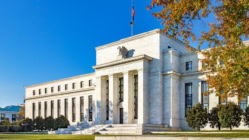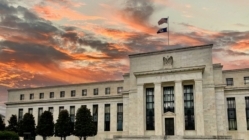The 1970s were a terrifying decade, proving without a doubt that boomers are not very smart and pretty much tasteless. 😊 We had pet rocks, mood rings, water beds, bell bottoms, unbuttoned shirts, long straggly hair, macramé, short shorts for men, shag carpeting, avocado green appliances, lava lamps, disco, polyester suits, and a fervent belief that jogging would cure all ills (it didn’t; it mostly just gave us bad knees). It wasn’t just a few of us who had those things either; We ALL had all of those things, and don’t let any self-respecting boomer tell you otherwise!
But what was most terrifying in the 1970s was inflation – as it ran out of control and our government had zero understanding of its causes or how to stop it. Comically, President Nixon tried to impose wage and price caps to stop inflation, and it just created massive shortages (like every third grader could have predicted), and President Ford launched his “WIN” (Whip Inflation Now) program because he thought inflation was just a mindset where those darn retailers kept raising prices and those darn consumers kept buying stuff…
Consumers were truly scared too, as their buying power was continually eroded and many families lived hand-to-mouth in a very slow economy with double-digit price growth.
Inflation was out of control in the 1970s for many reasons and here are a few of them:
- Off Gold Standard: President Nixon officially decoupled the dollar from gold in 1971 (other countries could no longer exchange their dollars for gold), allowing the government/Fed to effectively print far more money.
- Oil Embargo/Shortage: Saudi Arabia and OPEC formed a cartel and created a massive oil shortage via an embargo that drove the price of oil and all related products through the roof. This in turn drove up the prices of all other products that relied on petroleum in one way or another.
- More Bank Lending: 95% of our money supply comes from bank lending, and when banks are lending at a more fervent pace (like they did in the 1970s), the money supply increases outside of the government’s control and inflation can surface.
- Surging Boomer Demand: Boomers hit their peak consumption years and that extra demand pushed up prices.
- Government Spending. When our government spends money or gives it away without a corresponding increase in the production of goods and services, we typically see inflation (see the last 3 years as an example). Anyway, we saw this in the 1970s as well.
- High Money Velocity: This is a much bigger and more interesting factor than most people understand. Velocity refers to how often dollars turn over in an economy. For example, if Bob got paid $100 for working at Sears, he then might go to the bell bottom store to buy bell bottoms, the bell bottom retailer would then use the money he got from Bob to buy a haircut from the barber, and the barber would then take that money to get into the disco to buy cocaine, and the cocaine dealer would then go to Sears to buy a new scale from Bob, and so on. Anyway, that money turned over much faster in the 1970s, and you need velocity for inflation. Currently, velocity is LOW and if it stays very low, it could do much to stem inflation no matter what the Fed does.
I bring all this up because social media is littered with comparisons of today’s inflationary economy to the 1970s – but could it be a good thing?
Famed real estate guru, Ken McElroy has been leading the charge with several videos including this 7-minute gem: Is the 1970s Economy Coming Back? A Comparison to 2023.
There are many reasons why we could see a repeat of the 1970s, including pending energy shortages and much higher oil prices, the “re-shoring” of manufacturing from China and other low-cost countries to the U.S., and, most importantly, the likelihood of our government just printing money en masse to pay off all its excess debt.
Some People Got Filthy Rich Because Of Inflation
Consumers and many companies should rightfully be terrified of this prospect, but real estate owners should be doing cartwheels. This is because real estate investors got filthy rich in the 1970s, as their investments rode the inflation elevator all the way to the top because hard assets like real estate always rise with inflation. In addition, investors were able to pay off their real estate-related debts with dollars that were worth less and less due to inflation. I can’t overstate this benefit enough. Borrowers with fixed-rate debts often do extremely well in inflationary environments – like I explained in this blog: Richest Man in Germany Got Rich FROM INFLATION.
Ken McElroy tells us in his video above that his mentor got very rich in the 1970s, and I personally remember reading about all the fortunes that were made in real estate. In the 1980s, a huge portion of the “Forbes 400” made their fortunes in real estate in fact, and it was often because of the conditions I describe above.
Anyway, we may see the 1970s repeat but it will not be all bad for those of us buying real estate and helping others do the same.
























